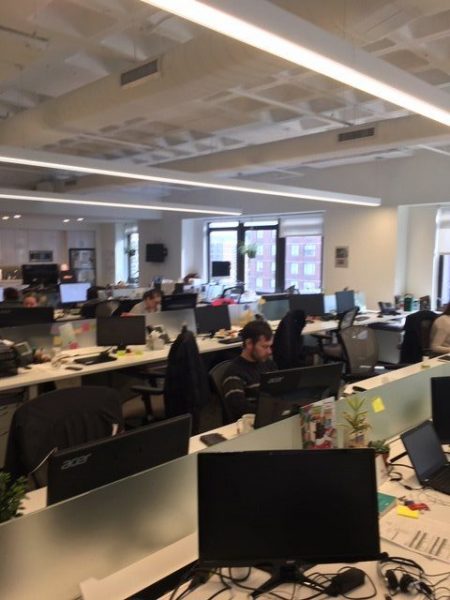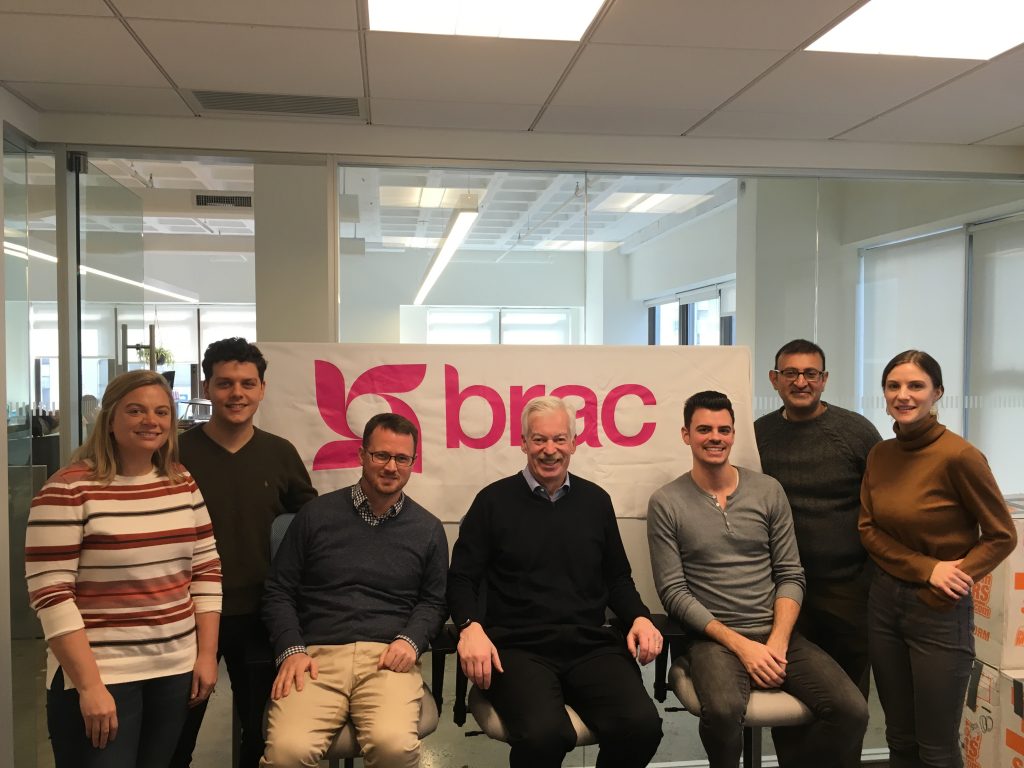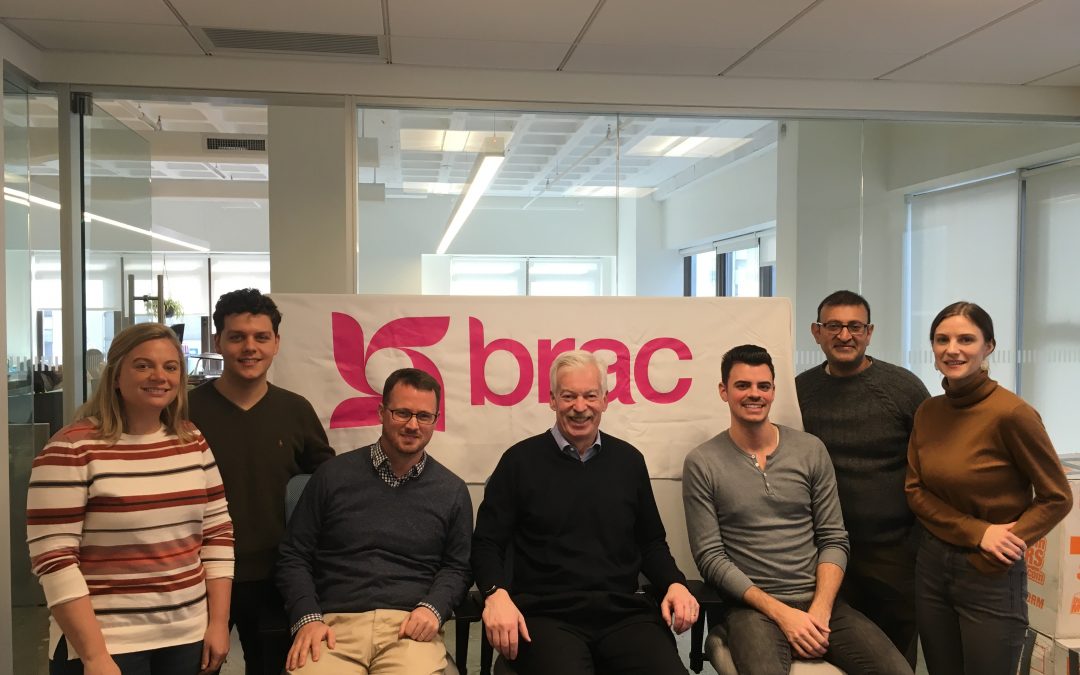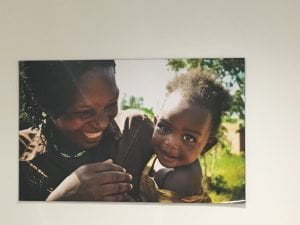Better Than Most is a regular feature of The Business of Giving, examining the best places to work among social good businesses and nonprofit organizations.
Denver: The largest NGO in the world and, in many people’s estimation, the most effective is BRAC…and you don’t get to be that way without a great workplace culture. So, this evening, we’ll be visiting the New York offices of BRAC to see what makes it such a special place and hear from some of the members of the team, starting with the President and CEO of BRAC USA, Donella Rapier:

Donella Rapier: I think BRAC itself is quite an interesting experience. It’s in a 20-story building that was put up when there was nothing there. After that, the largest slum in all of Dhaka basically ended up being right nearby. So, you never forget who you’re working for because when you look out the window, you can see them.
Ritual/Engagement/Workplace Environment
Bobby Irven: This might be a little specific to the Ultra-Poor Graduation Team, but every new member takes an immersion visit to Bangladesh to actually see and be inside the graduation program. A few months after I started, I was invited to headquarters in Dhaka. The headquarters is in itself a really interesting place. It’s one of the tallest buildings in Dhaka, and it houses all of BRAC’s offices, BRAC’s departments. Even when you go to the lobby, when you see that the sign of each floor; one floor is for Humanitarian. One floor is for Disaster Relief. One floor is for Tuberculosis and Health, things like that. It’s something I’ve really never seen, even after working in the UN, just the way the building is made up and the activity. It feels like a beehive. Dhaka itself feels like a beehive.
Hiring/Onboarding
Whitney Reichenbacker: He really sits down with all new hires and explains the history of BRAC because it’s such a large entity, and there are so many programs that are happening in so many different places, and different iterations or programs, and it’s hard to explain. I think that’s probably the highlight for most people, at least on the onboarding side.
Onboarding/Teams
Emily Coppel: So, it’s easy for new staff to get to know people. I think that because we travel quite a bit, and we travel quite a bit in teams, that has really bonded a lot of us in a pretty unique way that you may not see in other organizations. If we spend two weeks in Kenya together, you go through all of the different challenges of acclimating to a different environment and balancing work and working long hours. I’ve just seen how those trips and the type of work we do really has made us a very tight-knit team.
Interpersonal Values in Context with Organizational Values
Scott MacMillan: He turned to me, and he said, “So you people at BRAC, you’re like a cult. All you talk about is BRAC, BRAC, BRAC, and you get a bunch of BRAC people together, and that is the only topic for the entire evening or the entire time they are together.” And I think that says a little bit, that also answers your question that you… you said most organization would be too brittle, right? To make a huge change…some of the huge changes that we’ve been talking about. BRAC isn’t brittle. In a way, people tend to bend before they break, so to speak, and that allows senior management to bring about changes that might in fact be very painful or uncomfortable for some people.
Sharad Aggarwal: The BRAC values, as far as I understand, are more organizational values about how the work is itself done. But obviously, staff and processes and systems have to support the way that the work is done. The way we looked at it is that we didn’t want to discount or adopt new values organizationally for the work at the BRAC USA level that would compete against or question what BRAC was doing. We really wanted to come up with values that were really essential for us as employees of the organization here. These are more personal, behavioral values about how we relate to each other and what we look for here. These won’t necessarily be indoctrinated in policies, but they are the types of actions and the mindset that we want to have in the office.

Alex Wheeler: Everybody sits and stands at the same desk in an open space and really just contributes to a sense of transparency and equal value…I actually haven’t worked in an open space before. I do find that it took some getting used to in terms of just feeling like you can have meetings anywhere in the office if the conference room isn’t open or not wanting to disturb someone or knowing what should and shouldn’t be shared openly. But I actually do like it, and it creates a sense of understanding what everyone is working on, who works with whom.
Professional Development
Whitney Reichenbacker: I don’t know if this is unique but we do 360s on all staff. The people providing feedback to staff could be internal to BRAC USA. They could be our BRAC colleagues internationally. They could be board members. It’s not traditional in any way. I’ve done 360 as you’re providing feedback up to somebody. In this case, everybody is receiving feedback from their peers or colleagues that they have identified as somebody that they work closely with.
 Feedback/Training in Feedback/Diversity of Cultural Norms in Giving Feedback
Feedback/Training in Feedback/Diversity of Cultural Norms in Giving Feedback
Emily Coppel: I think the other thing that I’ve really appreciated is that we recognize we’re working with a lot of different colleagues who have cultures and backgrounds that are different from our own. So, their way of giving and receiving feedback may not… they may not have the same cultural norms as we do in the US, or even generationally within the organization. So, I think what I’ve appreciated is that we openly talk about some of these challenges and share different approaches on how to effectively provide constructive feedback or criticism, highlighting opportunities for growth within the larger BRAC entity, and learning from each other in this office about how we can best navigate those different dynamics, especially in a really large organization that can be bureaucratic. So, we really work together to tackle some of those challenges.
Professional Development
Alex Wheeler: I know a few co-workers found an online class that they wanted to all take together. I believe it was human-centered design. So, they allotted a few hours each week – like one afternoon a week, I think – to learn together. It was a great opportunity for people to collaborate that might not actually be on the same team, learn something new together, and be able to bring a human-centered design approach into the office, which is really important for BRAC’s work.
Innovation/Silos
Scott MacMillan: BRAC has come up with a mechanism to break through the silos essentially by establishing a smaller, nimbler unit of innovation within the larger body, which we call the Social Innovation Lab — set up a few years ago, and it’s a smallish team, and it’s a small program by BRAC standards, but it is the only program that has just social innovation in whatever form it might take as its focus. And essentially, its full-time job is to work with other programs to establish crosscutting learning, cross-program learning, scan what’s going on in the development space or even the technology space throughout the world and see how we might learn from that…to think about different solutions that the programs might not have thought of… To say, “Wait a minute! The health program, you’re working on a new digital platform for data collection. Are you aware that the education program or the adolescent girls program is looking at similar solutions?”
 Local Collaboration
Local Collaboration
Sharad Aggarwal: I think that it’s really that BRAC is truly and has lived by and bounded on the principles of localization. So, local ownership and being a locally-led organization, it’s achieved massive change in Bangladesh. It really is only an organization that could have achieved those changes if it was locally-led and locally owned. The acceptance, the reach, the ability to understand the populations that it’s working with is really only achievable if you really are from those communities.
Culture
Bobby Irven: As Scott mentioned, we have over a hundred thousand employees across the world but no one really knows what BRAC is, what it stands for. It doesn’t stand for anything. BRAC used to stand for, it was an acronym but now it’s just BRAC. But I think that actually speaks a lot to the organization itself and coming from a comm’s perspective, BRAC has been heads down doing its work since the 1970s. They haven’t really lifted their heads up too much to do marketing or communications because they’ve been so focused on getting the work done because the work is almost instrumental between the population of Bangladesh and the challenges its facing and many other countries that we work in, we’ve decided that it’s more important to do the work than to get recognition.

Denver: I would like to thank all those who participated in this piece: Emily Coppel, Scott MacMillan, Alex Wheeler, Whitney Reichenbacker, Bobby Irven, and Sharad Aggarwal. To hear this again, read the transcript or see pictures of the participants and offices, just come visit denver-frederick.com where we’ll have a link to my full interview with Donella Rapier, the President and CEO of BRAC USA.
The Business of Giving can be heard every Sunday evening between 6:00 p.m. and 7:00 p.m. Eastern on AM 970 The Answer in New York and on iHeartRadio. You can follow us @bizofgive on Twitter, @bizofgive on Instagram and at http://www.facebook.com/BusinessOfGiving



 Local Collaboration
Local Collaboration